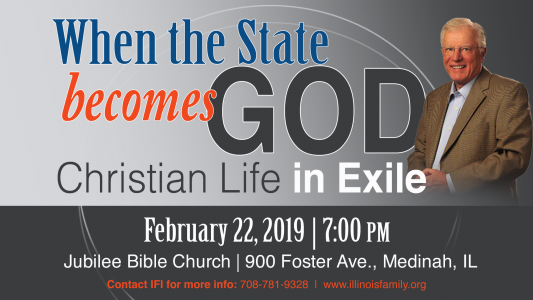The Alternate World Our Children Want to Live In
Written by Ed Straka
In his book, Amusing Ourselves to Death: Public Discourse in the Age of Show Business, author Neil Postman describes the growth and outright dominance of the entertainment industry and the all-pervading influence it has had upon American culture. More to the point – the book illustrated how a culture could literally be dumbed down by the type of entertainment it dealt with and consisted of. Equally telling in the author’s mind was how much time was spent viewing and reading material that was as frivolously meaningless as it was sensual and vulgar.
Yet, and co-relative to the above was the unfortunate reality that people no longer spent time reading, thinking about, or discussing things of import (Phil. 4:8). Rather, they chose to contemplate the words of some popular gadfly, movie star or rap musician, or lose themselves in endless hours of television. In other words, Proverbs tells us that the fool’s eyes are in the ends of the earth (Proverbs 17:24), but in our case – it’s the TV, video games and the tabloids. Postman suggested that our media was used like the drug “Soma” in Aldous Huxley’s Brave New World to medicate the masses into complacency.
Now and Then
As much as I agree with Postman’s assessment of our culture and the mindless rabble it appears to be producing exponentially, I would also like to suggest there is an even greater and more pernicious threat out there today that not only invites people into an alternative world – but a world of randomness and outright oblivion. A world so absorbing, not to mention stimulating, that young people prefer it to reality – and in time – seem to detach themselves from reality.
Consider: When we were growing up, the big thing was movies. There were no video games, only Checkers, Monopoly and pinball games at the bowling alley and the big concern of our parents was sexuality. Hollywood then – as it continues to now – constantly pushed the envelope with both language and the dress code. The racier movies were a cause of concern for our parents who, more often than not, banished us into the other room where we lamented our excommunication from the world of adults which meant access to movies with bad language and loose dress codes.
This was only natural: our desire was for the things that adults were aware of and participated in, accentuated by the fact that our parents kept it from us. Even to this day sexuality is cause for concern not only in the sense of living in a carnal society that seeks to seduce everyone and everything, but also in the real world of teen pregnancy and the unfortunate abortion of those unwanted babies (despite the recent overturning of Roe vs. Wade).
What movies especially did for the young, however, was to teach us about the world and the things in it. Above all, it taught us to dream about being a hero and heroes generally did the right thing. Even Jimmy Cagney when playing a gangster on his way to the electric chair could be counted on to say that his life was a waste and he had made a mistake if it meant scaring some kids straight. The biggest downside to TV back then was we probably watched too much of it.
Stories had a definite beginning with a goal, a problem, a solution to the problem and the struggle to apply the solution. All stories had an ending which was clear to the eye of the beholder. When it was all said and done, we kids knew they were only movies although we wanted to be like the people we saw in those movies.
Ideas Within
Today, however, things are different. In fact, there is an even greater problem in society that is wrapped up in the very fiber of our youth culture today that goes beyond bad language and loose dress codes. This “problem” stems from the pens and typewriters of men who rule the world from the grave, philosophically speaking: Marx, Nietzsche, Darwin, Freud, B.F. Skinner, and Jean Paul Sarte.
Each of these men had a profound, atheistic philosophy of life that influenced various academic disciplines and their perspective on the field of anthropology and what it means to be human. We don’t see it as clearly for two reasons:
First off, it is embedded in many of the movies, music, video games and comic books that our young people are involved with and if we do catch a glimpse, we just label it as “violent.”
Secondly, most people don’t study philosophy, so they don’t know the major players and the terms and phrases used by these men nor the implications of these terms and phrases when applied.
I can assure you, however, our modern media is much more than just “violent” but decidedly dangerous in terms of the human psyche because it stems from the internal dynamic latent within us all: sin. Modern technology amplifies sin and the desire for it with all the bells and whistles and unbelievable graphics. Equally, there is something latent within the various forms of media in terms of the ethos portrayed philosophically.
What’s not realized by most people is that many philosophers over the centuries perpetuated various non-Christian beliefs through their writings and these ideas ended up in educational institutions and the students of these educational institutions eventually graduated and joined mainstream America as educators, musicians, script writers and novelists.
Playtime?…
In time would come the world of high-tech video game developers who themselves pirated many of these ideas they encountered in a class, or in a movie or book, and used them to build what is called in movies a “story line” or “plot” and in the gaming world a “scenario.”
Some movies are obscene in the true sense of the word’s definition: it belongs “off stage” meaning it’s not necessary to advance the plot of the movie or play. Hollywood is replete with these movies and with the rise of Netflix we now have access to movies from abroad that have no moral sensibilities at all in terms of what they allow on screen.
Video games are not much better. Although I’ve never seen the games, nor did my boys buy them, there are games one can play featuring scenarios that can be anything from shooting up a school or public building to rape and out-right destruction of a city. I believe the most infamous such game is called “Grand Theft Auto.”
What needs to be understood is this: these are not just games and movies! They are philosophical & psychological conditioners that proselytize a specific world and life view that is antithetical to Christianity. Equally, it is a world designed to draw us in because it panders to the lust of the flesh, the lust of the eyes and the pride of life (1 John 2:16): the very things the script writers and game designers have given themselves over to (Jude 1:8).
The themes of most of these novels or movie story lines or video game “scenarios” are built on the witch’s brew of atheism and historical relativism and the reality of what men and women are capable of who were influenced by the ideas of the above-mentioned men if not restrained by a transcendent moral code.
In other words, if the above-mentioned men, and those like them are correct, and there is no fixed reference point in the universe residing metaphysically in an actual God – then there can be no ultimate standard of right and wrong to base morality upon. A prospect which leaves the human race “home alone” as it were, driven by the blind forces of nature which itself is driven by unknowable forces of biological necessity and determinism and nothing else. Man is all impulse and exercises his will with no remorse (1 Corinthians 2:14).
It is this world of relativism mixed in with the idea of man as animal trained by unknown outside forces with no beginning, no purpose, and thus no real goal in life that acts as the backdrop for these games and the various novels and movies available to young people today. All of which is designed to show that there is no ultimate meaning to life: only a colorful, high-tech invitation into the Void.
Granted, my generation caught glimpses of endless, violent life with little purpose in Clint Eastwood westerns and Charles Bronson fighter movies, yet these characters still portrayed a sense of crude justice and generally defended the weak and put down bad guys. Things are different now.
The dominating thing in all the movies, music, comic books, and games today is the quest for three things: ecstasy, escape or power. Each of those concepts has its appeal to different individuals for all human beings have a sinful tendency. But for those to whom God is a non-existent entity these three things are the focus of life, as opposed to what Scripture admonishes us to focus upon (Philippians 4:8).
When It’s All Said and Done
Understand: I’m not suggesting if you or your child plays a video game you will both become a nutcase. I am suggesting that those whose total free time is spent in the world of unreality end up with difficulty when faced with reality and will utilize those tools they have been “evangelized” with via entertainment (1 John 4:3). The new Avatar movie is case and point: history sold with fantastic colors, special effects and graphics that in the end suggests that Western Civilization is cruel, greedy and selfish and if we could only return to the pristine past of the noble savage – in this case blue with tails – all would be well. Ironically, the very system that Cameron castigates is the social-economics system responsible for his great wealth and fame as a director, but what’s $700,000,000 have to do with it?
Thus, as parents who seek to raise their children as well as educate them intentionally for hopes of a brighter, productive future serving in the Kingdom of God, it is important to realize that “education” does not stop with the homeschooling lesson of the day but continues with your child’s entertainment (1 Corinthians 15:33; ESV).
Choose wisely!
Edward Straka has spent most of his adult life in education having taught at the collegiate level as well as the high school level in the areas of Ancient and Medieval History, U.S. History, World View, Economics and US Government. He has pastored churches in Wisconsin and Mississippi and taught Japanese at Honda of America, and Piqua Community College in Ohio. He has written both historical fiction and futuristic dystopian fiction with a bio-ethical slant as well as nonfiction social theory books available on Amazon. Currently, Mr. Straka teaches Theology and is the acting Director of Christian Liberty Homeschools headquartered in Arlington Heights, Illinois, yet having students throughout the world.
This article was originally published by our friends at Christian Liberty Homeschools.

